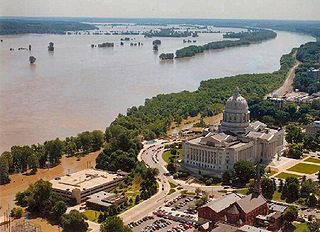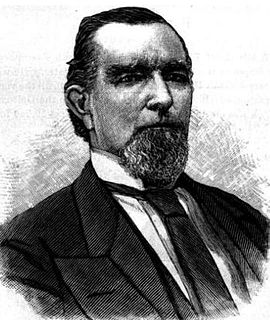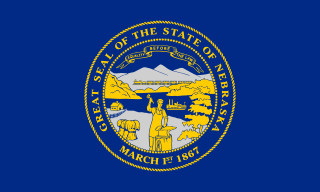
The Mississippi River is the second-longest river and chief river of the second-largest drainage system on the North American continent, second only to the Hudson Bay drainage system. Its source is Lake Itasca in northern Minnesota and it flows generally south for 2,320 miles (3,730 km) to the Mississippi River Delta in the Gulf of Mexico. With its many tributaries, the Mississippi's watershed drains all or parts of 32 U.S. states and two Canadian provinces between the Rocky and Appalachian mountains. The main stem is entirely within the United States; the total drainage basin is 1,151,000 sq mi (2,980,000 km2), of which only about one percent is in Canada. The Mississippi ranks as the fourth-longest and fifteenth-largest river by discharge in the world. The river either borders or passes through the states of Minnesota, Wisconsin, Iowa, Illinois, Missouri, Kentucky, Tennessee, Arkansas, Mississippi, and Louisiana.

A levee, dike, dyke, embankment, floodbank or stopbank is an elongated naturally occurring ridge or artificially constructed fill or wall, which regulates water levels. It is usually earthen and often parallel to the course of a river in its floodplain or along low-lying coastlines.

The Great Flood of 1993 was a flood that occurred in the Midwestern United States, along the Mississippi and Missouri rivers and their tributaries, from April to October 1993. The flood was among the most costly and devastating to ever occur in the United States, with $15 billion in damages. The hydrographic basin affected over around 745 miles (1,199 km) in length and 435 miles (700 km) in width, totaling about 320,000 square miles (830,000 km2). Within this zone, the flooded area totaled around 30,000 square miles (78,000 km2) and was the worst such U.S. disaster since the Great Mississippi Flood of 1927, as measured by duration, area inundated, persons displaced, crop and property damage, and number of record river levels. In some categories, the 1993 flood even surpassed the 1927 flood, at the time the largest flood ever recorded on the Mississippi.

The Fifty-first United States Congress, referred to by some critics as the Billion Dollar Congress, was a meeting of the legislative branch of the United States federal government, consisting of the United States Senate and the United States House of Representatives. It met in Washington, D.C., from March 4, 1889, to March 4, 1891, during the first two years of the administration of U.S. President Benjamin Harrison.

The Forty-fifth United States Congress was a meeting of the legislative branch of the United States federal government, consisting of the United States Senate and the United States House of Representatives. It met in Washington, D.C. from March 4, 1877, to March 4, 1879, during the first two years of Rutherford Hayes's presidency. The apportionment of seats in the House of Representatives was based on the Ninth Census of the United States in 1870. The Senate had a Republican majority, and the House had a Democratic majority.

The Forty-sixth United States Congress was a meeting of the legislative branch of the United States federal government, consisting of the United States Senate and the United States House of Representatives. It met in Washington, D.C. from March 4, 1879, to March 4, 1881, during the last two years of Rutherford Hayes's presidency.

The Forty-seventh United States Congress was a meeting of the legislative branch of the United States federal government, consisting of the United States Senate and the United States House of Representatives. It met in Washington, D.C. from March 4, 1881, to March 4, 1883, during the first and only year of James Garfield's presidency, and the first two years of his successor, Chester Arthur's tenure. The apportionment of seats in this House of Representatives was based on the Ninth Census of the United States in 1870. The House had a Republican majority; the Senate was evenly divided.

The United States Army Corps of Engineers Mississippi Valley Division (MVD) is responsible for the Corps water resources programs within 370,000-square-miles of the Mississippi River Valley, as well as the watershed portions of the Red River of the North that are within the United States. It excludes the entire watersheds of the Missouri River and Ohio River, and portions of the Arkansas River and the Red River of the South, but otherwise encompasses the entire Mississippi River from Lake Itasca, Minnesota, to the Gulf of Mexico. The district includes all or parts of 13 states: Arkansas, Illinois, Iowa, Kentucky, Louisiana, Michigan, Minnesota, Mississippi, Missouri, North Dakota, Tennessee, Wisconsin, and South Dakota.

Newton Crain Blanchard was a United States Representative, U.S. senator, and the 33rd governor of Louisiana.

John Mills Allen, known as "Private John" Allen, was a member of the United States House of Representatives from Mississippi.
George Washington Prince was a U.S. Representative from Illinois.

John Floyd King was a U.S. Representative from Louisiana.

Samuel Matthews Robertson was a U.S. Representative from Louisiana, son of Edward White Robertson.

Thomas Clendinen Catchings was a U.S. Representative from Mississippi.

Edward White Robertson was a United States Representative from Louisiana. He was also the father of Samuel Matthews Robertson.
The Flood Control Act of 1917 is an Act of Congress enacted in response to costly floods in the lower Mississippi Valley, the Northeast, and the Ohio Valley between 1907 and 1913.
The Flood Control Act of 1928 authorized the U.S. Army Corps of Engineers to design and construct projects for the control of floods on the Mississippi River and its tributaries as well as the Sacramento River in California. It was sponsored by Sen. Wesley L. Jones (R) of Washington and Rep. Frank R. Reid (R) of Illinois, in response to the Great Mississippi Flood of 1927.

The project design flood is a hypothetical "maximum probable" flood of the Mississippi River used by the United States Army Corps of Engineers to aid in the design and execution of flood protection in the Mississippi Valley.

Concordia is a ghost town in Bolivar County, Mississippi, located on the eastern edge of the Mississippi Levee, approximately 2.5 mi (4.0 km) west of Mississippi Highway 1.

Mound Landing is a ghost town in Bolivar County, Mississippi, United States.

















